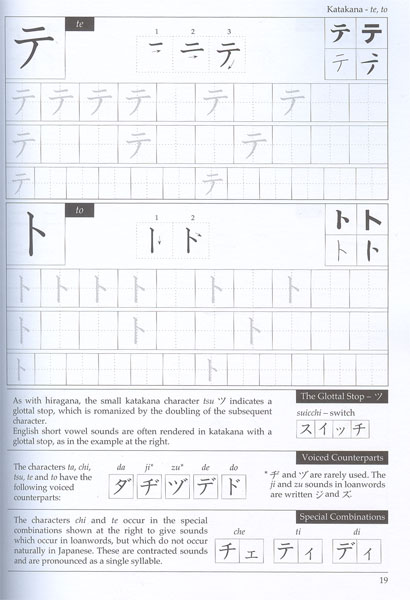
In a short introduction, Gleeson outlines the different strokes needed to form each letter, and he briefly provides a history lesson about how kana developed.
Each page provides a stroke-by-stroke breakdown of a katakana character, including how the character looks in four different variations. Then he includes an area for you to practice, complete with trace-over guides. I recommend making copies of each page and practicing on these copies instead of in the workbook itself. Repetition is important!

Writing Japanese Katakana is a practical workbook for anyone beginning to learn Japanese. It is available from Tuttle Publishing and Amazon.




